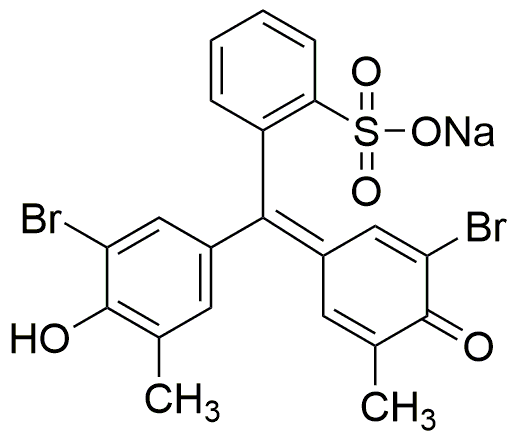Bromocresol purple solution (0.04 wt. % in H2O) is widely utilized in research focused on:
- pH Indicator: This solution serves as a reliable pH indicator in various laboratory settings, providing clear color changes that help researchers determine the acidity or alkalinity of solutions quickly.
- Biochemical Assays: It is commonly used in biochemical assays to monitor enzymatic reactions, allowing scientists to track changes in pH that occur during metabolic processes.
- Microbiology: In microbiological studies, it assists in identifying bacterial growth conditions by indicating pH shifts in culture media, which can be crucial for optimizing growth parameters.
- Education: Educational institutions utilize this solution in chemistry and biology labs to teach students about acid-base reactions and the importance of pH in biological systems.
- Environmental Testing: It is applied in environmental science for testing water quality, helping to assess the health of aquatic ecosystems by monitoring pH levels.
General Information
Properties
Safety and Regulations
Applications
Bromocresol purple solution (0.04 wt. % in H2O) is widely utilized in research focused on:
- pH Indicator: This solution serves as a reliable pH indicator in various laboratory settings, providing clear color changes that help researchers determine the acidity or alkalinity of solutions quickly.
- Biochemical Assays: It is commonly used in biochemical assays to monitor enzymatic reactions, allowing scientists to track changes in pH that occur during metabolic processes.
- Microbiology: In microbiological studies, it assists in identifying bacterial growth conditions by indicating pH shifts in culture media, which can be crucial for optimizing growth parameters.
- Education: Educational institutions utilize this solution in chemistry and biology labs to teach students about acid-base reactions and the importance of pH in biological systems.
- Environmental Testing: It is applied in environmental science for testing water quality, helping to assess the health of aquatic ecosystems by monitoring pH levels.
Documents
Safety Data Sheets (SDS)
The SDS provides comprehensive safety information on handling, storage, and disposal of the product.
Product Specification (PS)
The PS provides a comprehensive breakdown of the product’s properties, including chemical composition, physical state, purity, and storage requirements. It also details acceptable quality ranges and the product's intended applications.
Certificates of Analysis (COA)
Search for Certificates of Analysis (COA) by entering the products Lot Number. Lot and Batch Numbers can be found on a product’s label following the words ‘Lot’ or ‘Batch’.
*Catalog Number
*Lot Number
Certificates Of Origin (COO)
This COO confirms the country where the product was manufactured, and also details the materials and components used in it and whether it is derived from natural, synthetic, or other specific sources. This certificate may be required for customs, trade, and regulatory compliance.
*Catalog Number
*Lot Number
Safety Data Sheets (SDS)
The SDS provides comprehensive safety information on handling, storage, and disposal of the product.
DownloadProduct Specification (PS)
The PS provides a comprehensive breakdown of the product’s properties, including chemical composition, physical state, purity, and storage requirements. It also details acceptable quality ranges and the product's intended applications.
DownloadCertificates of Analysis (COA)
Search for Certificates of Analysis (COA) by entering the products Lot Number. Lot and Batch Numbers can be found on a product’s label following the words ‘Lot’ or ‘Batch’.
*Catalog Number
*Lot Number
Certificates Of Origin (COO)
This COO confirms the country where the product was manufactured, and also details the materials and components used in it and whether it is derived from natural, synthetic, or other specific sources. This certificate may be required for customs, trade, and regulatory compliance.


